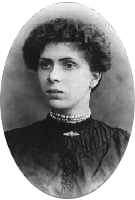The Aesthetics of Anarchy : Art and Ideology in the Early Russian Avant-Garde by Nina Gourianova [Book review]
Gourianova puts the case that the early Russian avant-garde (1910-18) was a creative (and resolutely unsystematic) explosion worth looking at on its own terms, rather than as a precursor to constructivism. It’s fascinating, and anyone interested Russian avant-garde art should read it. But is there anything in it for someone interested in Russian anarchism? Gourianova proposes that these artists were “ontological anarchists” (ontology: philosophy of study of being), saying there’s a lot of this about but that it has little in common with political anarchism (p22-3 and notes). This reflects the current academic trend for spurning (frequently without knowing an awful lot about it) the “classical” anarchism of a movement that actually existed and tried to change the world in favour of Max Stirner and what’s better described as “philosophical nihilism”. But, for a brief period, these artists were closely connected with the anarchist movement, in particular Anarkhiia [Anarchy], newspaper of the Moscow Federation of Anarchist Groups. Chapters nine and ten in particular show how, in the revolutionary period of 1918-19 the artistic search for new ways of seeing expanded to a broader attempt to find new ways of living.
“Beginning in early 1918, a ‘Creativity’ (Tvorchestvo) section specializing in art and literature was included in almost every issue of Anarkhiia. By the spring of 1918, its major contributors were [Kazimir] Malevich and [Aleksandr] Rodchenko (who also used the pen names Anti and Aleksandr). Rodchenko’s involvement with anarchism was very strong, although later he tried not to publicize this fact, for obvious political reasons. He published about twenty articles in Anarkhiia. Malevich contributed to more than twenty issues and supported the paper financially.
“The demobilized Aleksei Gan, who was actively interested in proletarian theater, and was to become one of the leaders of the Constructivist movement in the 1920s, was the first contributor to Anarkhiia‘s art section. Other participants included Aleksei Morgunov, a member of Larionov’s group and later an adherent of Malevich’s Suprematism, and the painters Ivan Kliun, Olga Rozanova, and Nadezhda Udaltsova.
“The contributions made by avant-garde artists and poets in the ‘creativity’ section of Anarkhiia were significant, considering that they had never participated in a political forum before. Their involvement in an exclusively anarchist platform indicates they not only perceived the revolution through the prism of anarchist aesthetics, as a path ‘to the new limit,’ but also chose to associate with a political movement persecuted by the Bolshevik state:
- We are revealing new pages of art in anarchy’s new dawns …
- We are the first to come to the new limit of creation, and we shall uncover a new alarm in the field of the lacquered arts …
- The powerful storm of revolution has borne off the garret, and we, like clouds in the firmament, have sailed to our freedom.
- The ensign of anarchy is the ensign of our ‘ego,’ and
our spirit like a free wind will make our creative work flutter in the
broad spaces of the soul.
- You who are bold and young, make haste to remove the
fragments of the disintegrating rudder. Wash off the touch of the
dominating authorities.
- And, clean, meet and build the world in awareness of
your day.” [Malevich “To The New Limit”, originally published as “K
novoi grani,” Anarkhiia 31 (1918)] (p220-1)
In June 1918 “participants in the ‘Creativity’ section were for the first time referred to as a specific group of ‘anarchist artists.’ Aleksei Gan, Baian Plamen’ (Vladimir Sidorov), Boris Komarov, Kazimir Malevich, Aleksandr Rodchenko, and A. Sviatogor (A. E Agienko) were planning to publish a collection entitled Anarkhiia–Tvorchestvo, a project destined to never be realized:
- Our newspaper cannot afford to offer more space
to the problems of art and creativity. We have decided to publish a
collection [of articles] dealing exclusively with the problems of
destructive and creative innovation of today in our building a culture.
The book is divided into three parts:
- Part one will be agitation; part two, dynamite and
form; part three – information. Going over dealers’, critics’, and other
party bosses’ heads … we have decided, like destructive dynamite, to
rise and fall with our forms of creative innovativeness into the very
thick of the masses.” [quote from book advert, Anarkhiia 72 (30 May 1918) (p225)
Gourianova has done valuable work by providing details of what the artists wrote in Anarkhiia, and fuller translations than otherwise available. But for artists and anarchists alike, freedom was about to be shut down:
“… the most precise and laconic characterization of this new snare [state art] was made by the railroad depot worker Vladimir Shokin in ‘The Time Has Come,’ a note addressed to ‘Comrade Futurists’ in the Arts section: ‘The only thing Friche’s articles and the decrees of the people’s commissars are shouting about is the fact that art “for the bourgeoisie” has been remodelled as art “for the proletariat,” and instead of bourgeois patrons there will be a “state” patron.’ [Anarkhiia 74 (1 June 1918] (p244)
The Aesthetics of Anarchy: Art and Ideology in the Early Russian Avant-Garde
Nina Gourianova [Gurianova on the book].
University of California Press 2012, An Ahmanson-Murphy Fine Arts Book
ISBN 9780520268760 £34.95
In KSL: Bulletin of the Kate Sharpley Library No. 72, October 2012
Subjects:
Similar items
- KSL: Bulletin of the Kate Sharpley Library No. 72, October 2012.
- Wilbur, Shawn P. Bakunin : A possible plan for an edition in ten volumes.
- Andreyev, Andrey Nikiforovich. Andrey Nikiforovich Andreyev defends Marusya Nikiforova.
- Anarchist Voices: An Oral History of Anarchism in America Paul Avrich (AK Press, 2005) [Review].
- Who fears to speak of Sixty-eight?.
